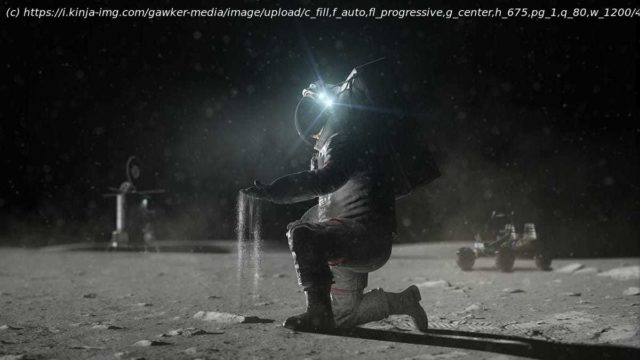Everything you need to know about the Artemis missions, which seek to put a man and a woman on the Moon this decade.
Not since 1972 has a human set foot on the Moon, but NASA is aiming to change that through its ambitious Artemis program. The lunar missions will kick off with Artemis 1, scheduled for launch on Monday, August 29. Live stream available here.
On December 14, 1972, Apollo 17 astronauts Gene Cernan and Harrison Schmitt said goodbye to the Moon. As they drifted toward Earth, it likely never occurred to them that humans wouldn’t return to the lunar surface for another half-century or more. But this is precisely where we find ourselves today, with the Apollo missions firmly in the history books.
Artemis is the program that finally promises to rekindle lunar exploration, as NASA seeks to land a woman and man on the Moon by no earlier than 2025. But there’s a lot more to Artemis than just plopping two people onto the lunar surface. This time, NASA plans to build a sustainable presence on and around the Moon, and to use the program as a stepping stone to the next giant leap: a crewed mission to Mars.
Announced in 2017, Artemis will “enable human expansion across the solar system,” according to NASA’s Artemis Plan. The Artemis era could involve as many as 11 lunar missions (some crewed and some uncrewed), of which the first five are currently under development.
Long-term goals include the construction of the Lunar Gateway (the first space station in orbit around the Moon) and the installation of Artemis Base Camp (a surface station). Both commercial and international partners will be involved, the latter of which will include the Canadian Space Agency, the European Space Agency, and Japan Aerospace Exploration Agency (JAXA).
Why did NASA choose the name Artemis?
Artemis is the Greek goddess of the Moon and the hunt and the twin sister of Apollo, so it’s a nice call-back to the original crewed lunar missions. In fairness, however, Artemis is a superior name choice for a lunar mission, as Apollo is the Greek god of the Sun. The new name, it could be argued, is a timely correction to a potentially sexist oversight.
Why is NASA going back to the Moon?
Through NASA, the United States is aiming to lead an “innovative and sustainable program of exploration with commercial and international partners to enable human expansion across the solar system and to bring back to Earth new knowledge and opportunities,” according to a Space Policy Directive signed on December 11, 2017. “Beginning with missions beyond low-Earth orbit, the United States will lead the return of humans to the Moon for long-term exploration and utilization, followed by human missions to Mars and other destinations,” the White House memorandum continues.
Or more simply, the return to our natural satellite is about fostering new scientific discoveries, investigating potential economic benefits, and inspiring a “new generation of explorers,” according to NASA.
Indeed, there’s still lots to learn about the Moon, such as the nature of its origin and its geochemical composition. Importantly, Artemis astronauts are set to explore the Moon’s south polar regions in search of water ice—a key enabler of a sustainable human presence there. Artemis could also carve a path to the commercialization of the Moon, whether it be space tourism or the mining of resources such as rare-earth elements and helium-3.
The part about Artemis being a stepping stone to Mars is also crucial. The technologies and learnings accrued over the course of these missions should make it possible for NASA and its partners to eventually launch a crewed mission to the Red Planet.
Start
United States
USA — software NASA’s Artemis Moon Landing Program: Launches, Timeline, and More






